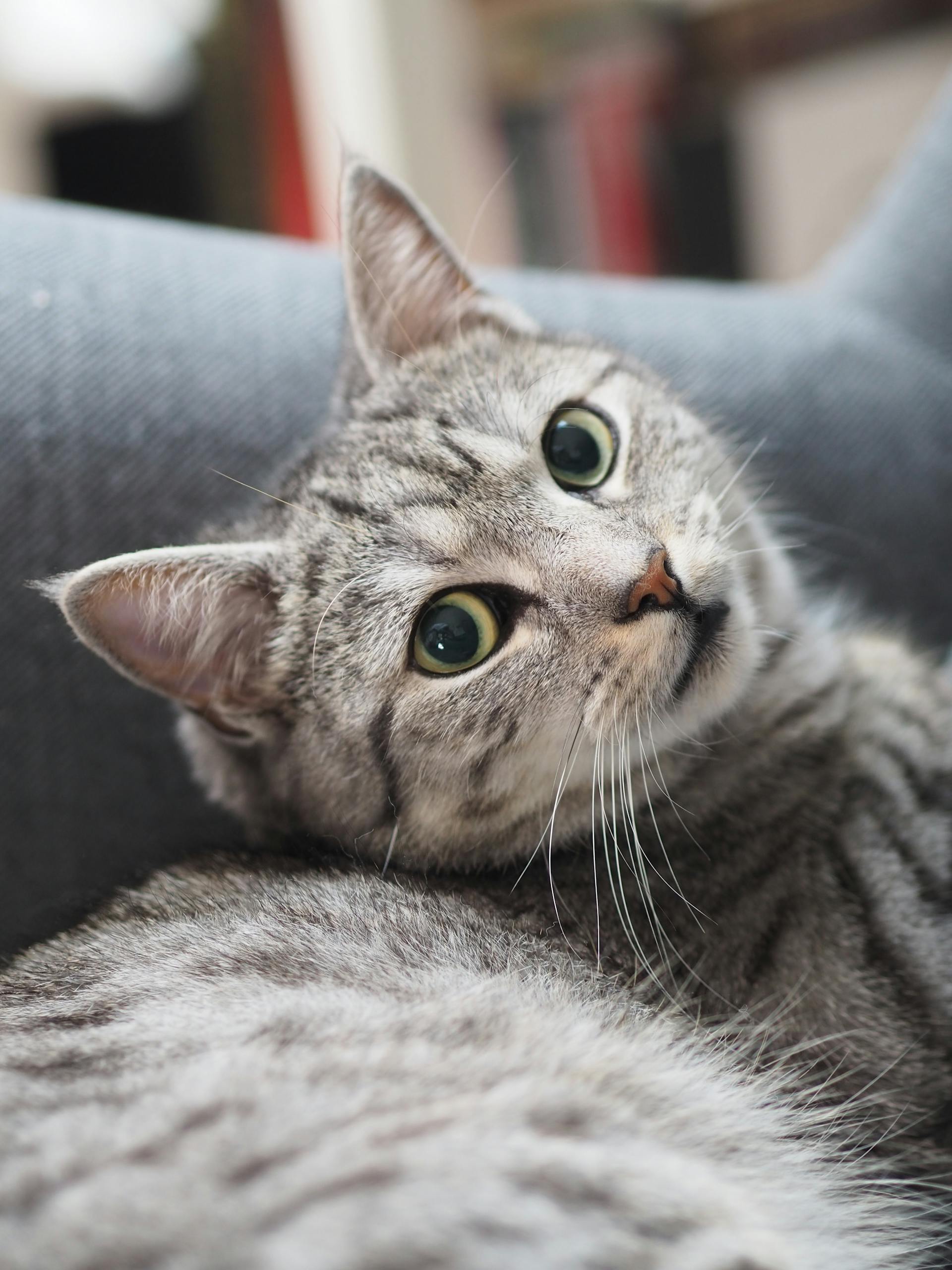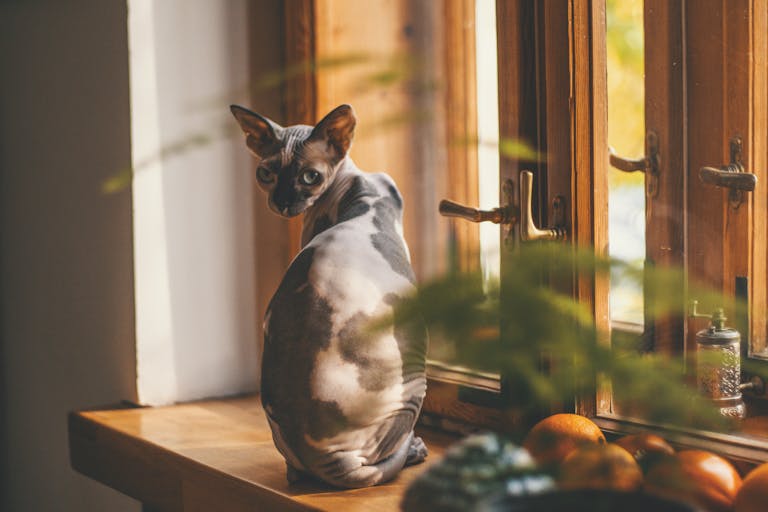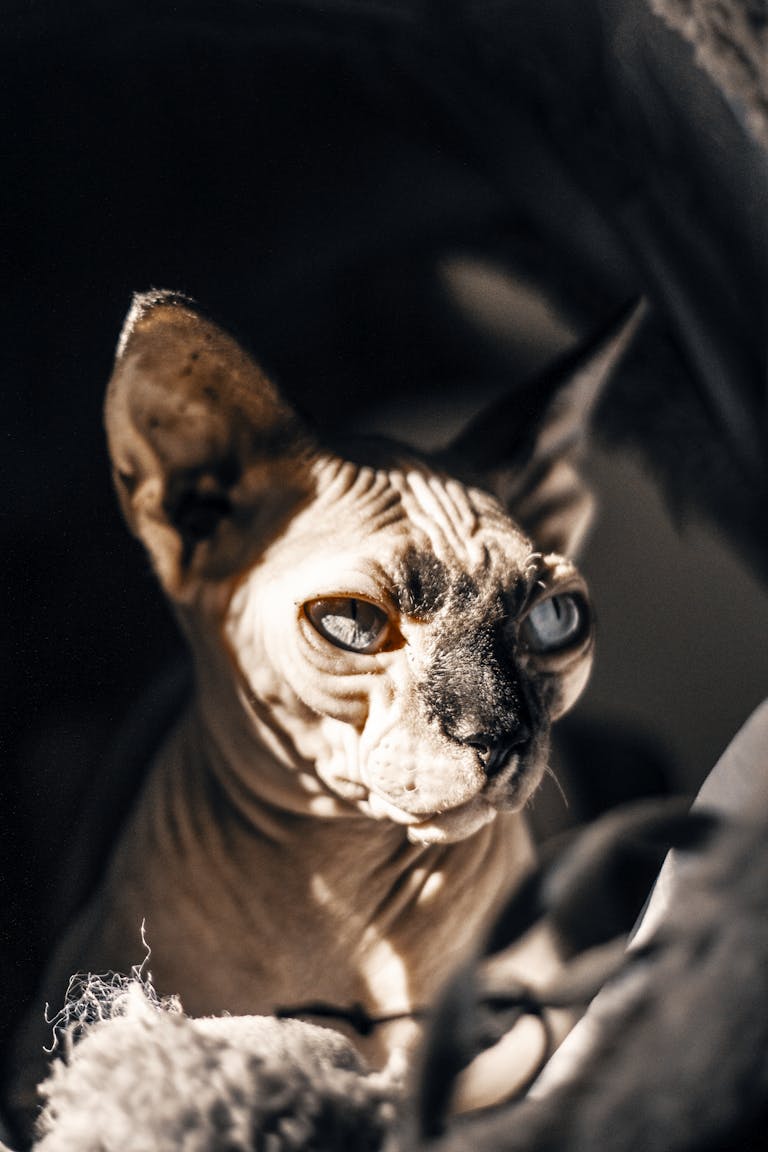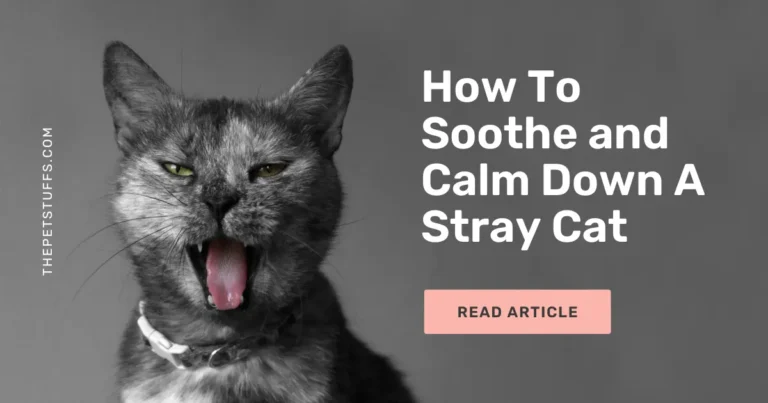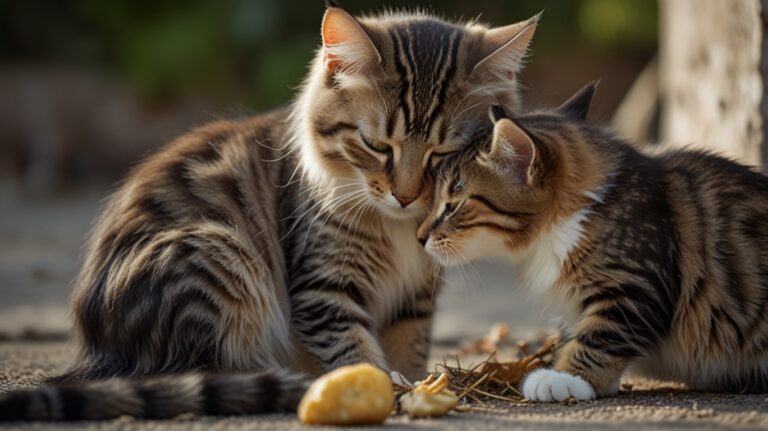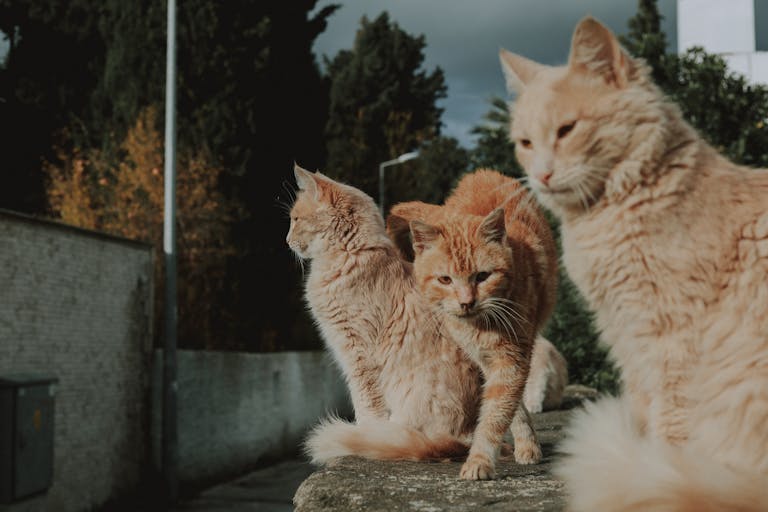Cats and Dominance – Signs and Solutions!
If your cat’s bossy attitude has taken over the house, you’re not alone! Dominant behavior in cats can often cause chaos, but understanding it is the key to restoring harmony. From pushing other pets aside to demanding your attention, your cat might be asserting dominance without you even realizing it.
In this article, we’ll break down why cats exhibit dominant behavior, how to spot the signs, and most importantly—what you can do about it.
Key Takeaways
- Cats can exhibit dominance toward both humans and other cats in various ways.
- Dominant behavior in cats can include aggression, marking territory, and controlling resources like food and space.
- Male cats are often more prone to showing dominance, particularly toward other male cats.
- Cats may try to “boss around” their owners through specific behaviors like excessive meowing or swatting.
- With the right strategies, you can curb dominant behavior and foster a more peaceful environment for your cat and household.
Dominant Behavior in Cats
Dominant behavior in cats stems from their natural instincts as territorial and independent animals. Unlike pack animals, cats are solitary hunters, which means they feel the need to assert control over their environment.
This behavior often manifests when cats are vying for resources such as food, resting spots, or your attention. A dominant cat may display behaviors like guarding specific areas or pushing other pets aside to access food or affection first.
Dominance in cats can develop due to social or environmental factors, including early socialization issues or competition with other pets in the household.
Understanding this behavior is crucial for recognizing whether your cat’s actions are normal feline independence or signs of dominance that may need addressing. Recognizing dominance early helps prevent escalation into aggressive or territorial behavior.
Signs of Dominant Behavior in Cats
Cats show dominance in a variety of subtle and obvious ways. Here are some of the most common signs that your cat may be displaying dominant behavior:
Aggression Toward Other Pets: Dominant cats often become aggressive toward other animals in the house. They may chase, swat, or hiss at other pets to establish themselves as the top cat. Watch for body language like arched backs, puffed-up fur, or a rigid posture, as these are signals of dominance and aggression.
Guarding Resources: Dominant cats may guard food, water, litter boxes, or even favored sleeping spots. If your cat often blocks access to these resources from other pets, it’s likely exhibiting dominant behavior.
Marking Territory: Spraying or marking territory is another clear sign of dominance, especially in unneutered males. This behavior is often aimed at establishing control over an area in the home.
Demanding Attention: Some dominant cats will insist on being the center of attention. They may meow loudly, nudge your hand aggressively for petting, or interrupt your interactions with other pets.
See also Why hairless cats a are expensive?
Body Language: Dominant cats often display assertive body language, such as sitting or lying on elevated areas, staring down other animals, or swishing their tails aggressively when interacting with other pets or people.
How Does a Cat Show Dominance Over Humans?
Dominant cats don’t just boss around other pets—they can try to dominate humans as well. Common ways a cat may assert dominance over its owners include excessive meowing for attention, swatting or biting when not getting its way, and even sitting on objects (or you) to claim space. Some cats may block pathways, making it clear that they want you to “obey” their rules.
Another form of dominance is through control of resources. Your cat may demand to be fed first, or it might sit in areas where you typically relax, making you feel like you’re the guest in your own home.
If your cat constantly interrupts you for attention or becomes aggressive when ignored, it’s likely trying to establish its dominance.
Dominant Behavior in Cats Toward Other Cats
Dominant behavior in cats toward other cats is most evident in multi-cat households. Cats will establish a social hierarchy, and the dominant cat will try to control access to resources like food, water, and litter boxes.
This dominance can be seen in behaviors such as blocking the other cat’s access to these resources or bullying them away from favored sleeping areas.
Aggression is a key component of dominance between cats, and it can escalate into swatting, chasing, or prolonged staring contests.
See also Scottish fold cost
Dominant cats may also display territorial behaviors by marking their space, spraying, or rubbing their scent glands against objects to claim ownership. It’s crucial to monitor these behaviors to prevent tension between cats from escalating.
Male Cat Dominance Behavior Toward Other Cats
Male cats, particularly unneutered ones, are more likely to exhibit dominant behavior toward other male cats. This often comes from their instinct to protect territory and access to mates.
Aggression is common, especially between male cats who live together, and fights can become more frequent if dominance issues are not addressed.
Spraying and marking territory is a major issue among dominant male cats. They may claim larger areas of the house, leaving the less dominant cats to retreat to quieter spaces.
Male cats may also show physical dominance by pushing other cats away from food bowls, water dishes, or preferred resting spots.
Dominant Behavior in Cats Toward Humans
Cats can also show dominant behavior toward humans, often in subtle ways. This could include behaviors like demanding to be fed first, swatting at hands that try to remove them from a preferred spot, or even “herding” their owners by walking in front of them to redirect their movement.
A dominant cat may also sit or sleep on top of you in a way that makes it difficult for you to move, effectively showing that they have control over the situation.
See also Healthy Homemade Cat food recipe
This kind of dominance is often accompanied by strong body language—an upright tail, direct eye contact, and assertive meowing or purring when their demands are met.
Male Cat Dominance Behavior Toward Humans
Male cats, especially unneutered ones, can be more aggressive and dominant toward humans. They may exhibit demanding behavior by insisting on attention and swatting or biting if they don’t get it.
Unneutered males are more likely to spray as a way of marking their territory, even if that includes areas of the house you frequent.
Male cats may also display dominance by nudging their owners, sitting on their laps forcefully, or biting when being petted too much or too little.
While this behavior can sometimes be playful, in dominant cats, it’s often more aggressive and controlling, indicating a desire to assert authority over their human companions.
How to Stop Dominant Behavior in Cats?
Managing dominant behavior in cats requires patience and consistency. Here are some effective strategies to help reduce dominance:
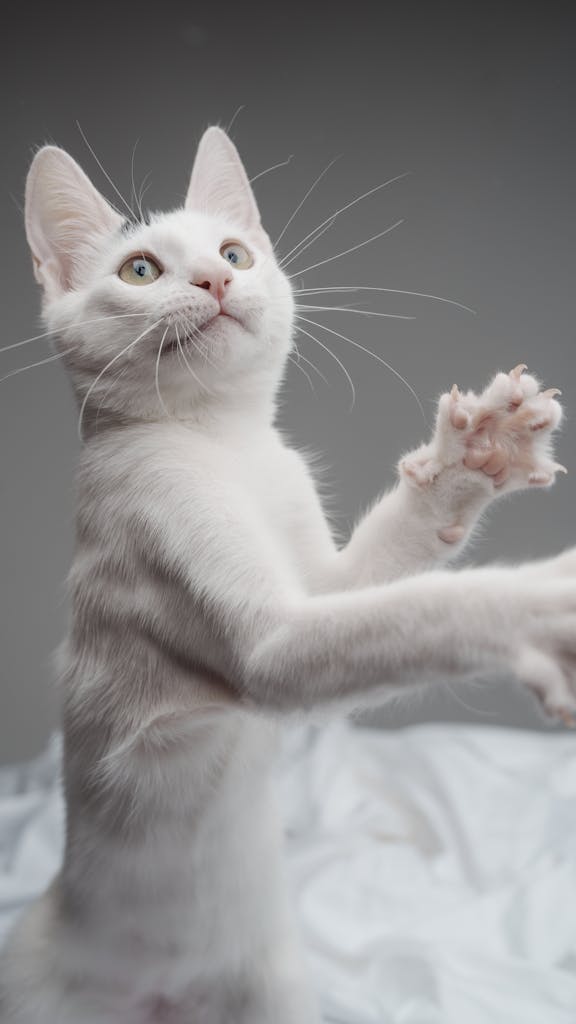
Provide Clear Boundaries
Cats need to know that certain behaviors, like swatting or biting, are not acceptable. Consistently discouraging these actions by saying “No” firmly or using non-physical deterrents like a spray bottle can help curb dominant tendencies.
Control Resources
Ensure that your cat knows that you control access to food, toys, and attention. Feeding your cat at specific times, rather than allowing free feeding, can help reduce territorial behavior. Providing multiple litter boxes and feeding stations in multi-cat households can also prevent fights over resources.
Spaying or Neutering
Neutering or spaying your cat can significantly reduce dominance, especially in males. This reduces the urge to mark territory and can lessen aggression.
See also Everything You know about Pampas cat
Provide Plenty of Mental and Physical Stimulation
Bored dominant cats often act out. Providing engaging toys, puzzle feeders, and frequent playtime can help expel excess energy and curb violent tendencies.
Positive Reinforcement
Give rewards or treats for good behavior. This emphasizes that acting in a polite and courteous manner is more beneficial than following orders.
Dominant Behavior in Cats FAQs
What cat traits are dominant?
Common dominant traits include aggression, territoriality, and guarding resources like food or resting spots.
What is the alpha cat behavior?
An alpha cat will often push other pets aside, demand attention, and control key resources like food and sleeping areas.
How do you stop a dominant cat's behavior?
You can stop dominant behavior by setting clear boundaries, using positive reinforcement, and ensuring your cat is spayed or neutered.
How do you know which cat is dominant in a fight?
The dominant cat will typically initiate aggression, such as swatting or hissing, and control access to resources.
How do cats show they are dominant?
Cats show dominance by blocking access to resources, marking territory, or showing aggressive body language like swatting or hissing.
Do cats have a dominance hierarchy?
Yes, cats can develop a hierarchy, especially in multi-cat households, with one cat typically asserting dominance over the others.
Final Thoughts
Understanding the root causes of dominant behavior in cats and treating them early can help restore harmony in your home. Whether your cat is displaying dominance over other pets or humans, consistent boundaries and clear communication are essential to reducing these behaviors.
See also Rehoming Cats
Neutering, providing adequate stimulation, and controlling access to resources are all great measures for reducing dominance. With patience and effort, you can help your cat coexist more peacefully with others.

